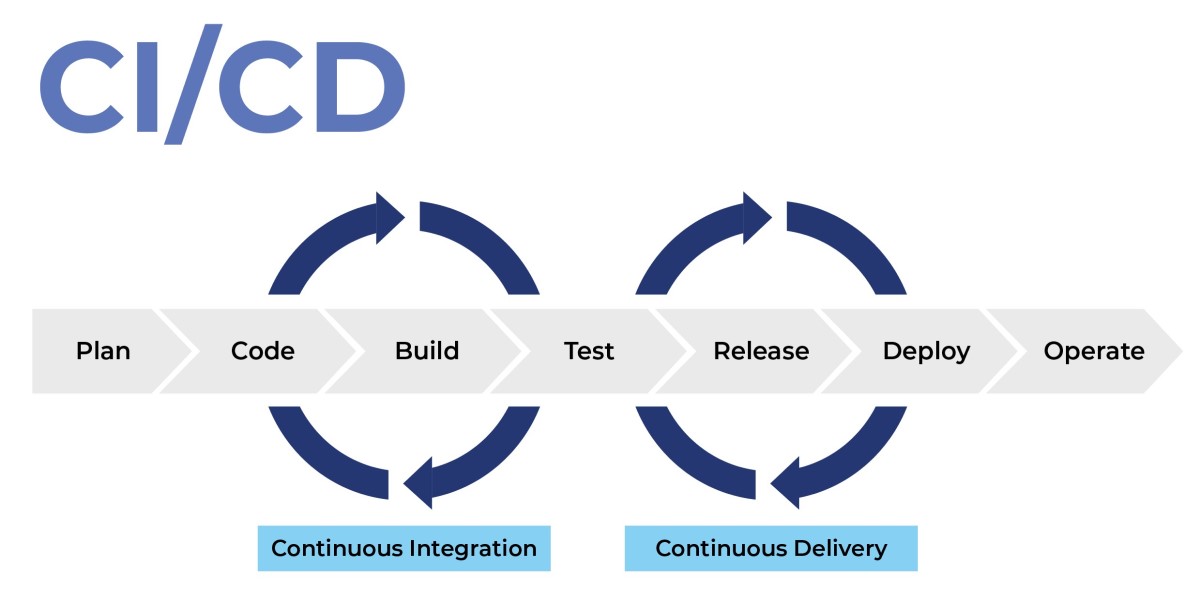Demystifying CI/CD: Accelerating Software Delivery with Continuous Integration and Continuous Deployment
In today’s fast-paced software development landscape, the ability to deliver high-quality applications quickly and efficiently is paramount. Continuous Integration (CI) and Continuous Deployment (CD) have emerged as essential practices for achieving this goal. In this article, we’ll explore what CI/CD is, why it’s important, and how you can implement it in your development workflows to streamline the delivery of your software products.
Understanding CI/CD
At its core, CI/CD is a set of practices and principles aimed at automating the process of building, testing, and deploying software.
Continuous Integration (CI) involves integrating code changes into a shared repository frequently, often multiple times a day. Each integration is verified by automated tests to detect and address integration errors as early as possible. By continuously integrating code changes, teams can identify and fix issues more quickly, reducing the risk of integration conflicts and ensuring a stable codebase.
Continuous Deployment (CD) takes CI a step further by automating the deployment of code changes to production environments. With CD, every successful build that passes the necessary tests is automatically deployed to production, eliminating manual intervention and accelerating the delivery of new features and bug fixes to end-users.
Key Benefits of CI/CD
Implementing CI/CD offers a multitude of benefits for software development teams:
- Faster Time to Market: By automating the build, test, and deployment process, CI/CD enables teams to release new features and updates more frequently, reducing time-to-market and staying ahead of the competition.
- Improved Quality: Automated testing as part of the CI pipeline helps catch bugs and regressions early in the development cycle, ensuring a higher level of software quality and reliability.
- Increased Collaboration: CI/CD encourages collaboration among developers, testers, and operations teams, fostering a culture of shared responsibility and accountability for the entire software delivery lifecycle.
- Reduced Risk: By automating repetitive tasks and standardizing deployment processes, CI/CD reduces the risk of human error and minimizes the likelihood of production failures or downtime.
- Scalability: CI/CD pipelines can easily scale to accommodate growing teams and complex software projects, providing a consistent and repeatable process for building, testing, and deploying applications.
Implementing CI/CD
While the benefits of CI/CD are clear, implementing it effectively requires careful planning and consideration. Here are some key steps to get started:
- Set up a Version Control System: Use a version control system such as Git to manage your codebase and track changes.
- Automate Your Build Process: Use build automation tools like Jenkins, CircleCI, or GitLab CI/CD to automate the process of compiling, packaging, and testing your application code.
- Write Automated Tests: Develop a comprehensive suite of automated tests, including unit tests, integration tests, and end-to-end tests, to validate the functionality and performance of your application.
- Define Deployment Pipelines: Create CI/CD pipelines that define the steps for building, testing, and deploying your application code, incorporating automated testing and approval gates as necessary.
- Monitor and Iterate: Continuously monitor the performance and reliability of your CI/CD pipelines, and iterate on them to optimize efficiency and address any issues that arise.
Conclusion
CI/CD has become the cornerstone of modern software development practices, enabling teams to deliver high-quality software at scale with speed and reliability. By embracing CI/CD principles and adopting automation tools and practices, organizations can accelerate their software delivery pipelines, improve collaboration across teams, and ultimately, deliver greater value to their customers. So don’t wait—start your CI/CD journey today and unlock the full potential of your development workflows.


